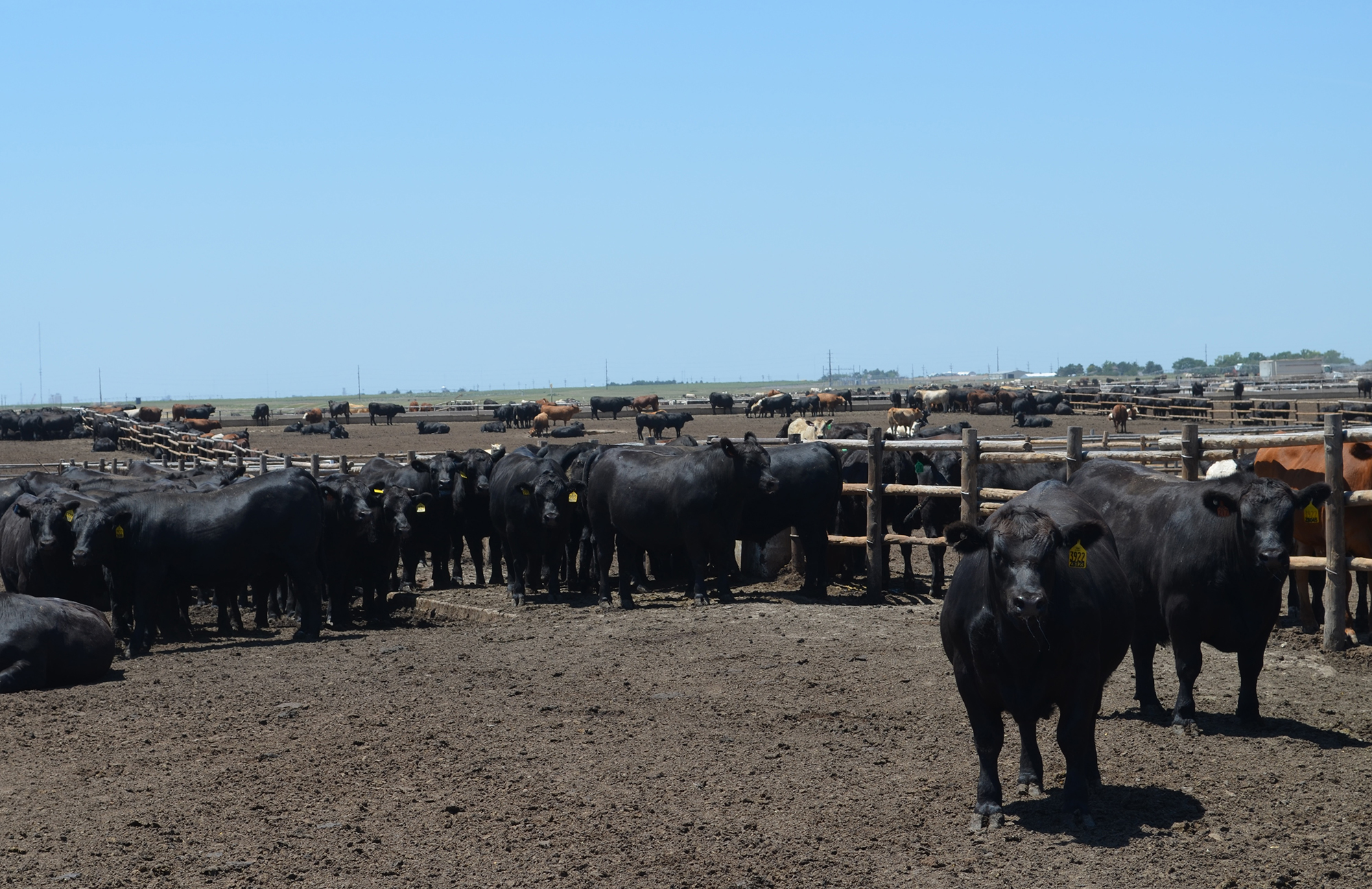Using timed artificial insemination (AI), Kasten attributes much of his carcass contest success to one bull. “His calves have been averaging 42% Prime,” he says. “We work hard to get those cattle bred with the best proven genetics, and getting in there with AI gives us more consistency and quality in our cattle.”
Nearly 90% of Kasten’s 39-head pen of steers made CAB or Prime in the second quarter, consistent with the 90.5% pen that won first quarter. Both were heavily influenced by the same bull, which Kasten has spent 20 years stacking pedigrees to produce.
In the north-central region, Jimmy Thomas similarly relies on proven genetics. He and wife Sarah have sourced bulls from Rancho Casino and Dal Porto Livestock in California for nearly 15 years. “They’re good people with good cattle, and we are good friends,” Thomas says. “That makes it pretty easy to do good work.
“All the bulls we buy are performance tested,” Thomas says. “We don’t just go by the EPDs (expected progeny differences); they give us the actual marbling scores and ribeye measurements. We put quite a bit of emphasis on that.” A tight genetic focus paid off with 85% of his 40-head pen achieving CAB acceptance or Prime.
Thomas puts those genetics to use at Beller Feedlot in Lindsey, Neb. He and feedlot manager Terry Beller share a competitive spirit. Beller says, “We love challenges. Our goal is always to produce as many Prime and CAB carcasses as we can without getting too big and too fat.”
Thomas is right on cue. “I guess you could say I’m kind of competitive,” he says. “CAB is the most noted branded beef program there is, and over the years I’ve been able to finish above the national average on CAB acceptance rates.”
Thomas and Beller are no strangers to success. They met in 2003 when Thomas was accepting the CAB Commercial Commitment to Excellence award and Beller was being honored as the brand’s Small Feedlot Partner of the Year. Both have frequented the winner’s circle in Angus carcass contests.
But it’s not always a focus on attaining the best cattle that matters. Sometimes, success is found in getting rid of the poorer ones. Jack and June Zimmerman won the ASCC southeast region for the quarter with 48.8% CAB acceptance or Prime, and no grading discounts. The couple feed their cattle with Buffalo (Okla.) Feeders.
Buffalo manager Tom Fanning says that perfect record is a key to profitability: “Look at this – it’s zero discounts!” he says, pointing to the data sheets. “What we’ve learned is, the premiums are great, but it’s not always how many premiums you have; it’s how many discounts you don’t have.”
The Zimmermans started keeping detailed ranch records in 1979 when they purchased JZ6 Ranch. Thirty years later, they still meticulously track herd records and carcass data.
“June and Jack know every cow on their place. They know their bloodlines – they know everything about everything in their herd,” says Fanning.
All ASCC contestants will be in the know by the end of the calendar year when the overall annual winner is announced. All regional winners from each quarter will be eligible for the $500 cash award. The completion will stiffen as the year goes on – entries nearly quadrupled from the first quarter to second quarter. “We would really like to encourage more feedyards to enter the contest,” says Sara Snider, director of AngusSource. “It is so exciting to see this contest grow. The carcass results we’re getting back are a real tribute to what quality Angus genetics can do.”
For more information on AngusSource or the ASCC, call 816-383-5100 or visit www.AngusSource.com.









